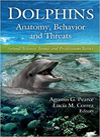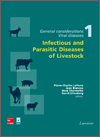September, 2010 news
September 30th, 2010
Via publiDB

Bovine tuberculosis: molecular epidemiology and implications in Public and Animal Health
PhD Thesis defense by Beatriz Romero MartĂnez at the Faculty of Veterinary Medicine of the Complutense University of Madrid
Mycobacterium tuberculosis complex (MTBC) is the cluster of pathogens which posses the higher health concern within the genus Mycobacterium. MTBC comprises seven species, being Mycobacterium tuberculosis the most relevant pathogen for Public Health. Regarding Animal Health, Mycobacterium bovis is the main pathogen that causes tuberculosis in cattle although it has a wide-host range such as wildlife and human beings. Mycobacterium caprae, on the other hand, is the main agent of tuberculosis in goats. The eradication of bovine tuberculosis is the key objective of all programs against this diseas…
Read more
September 30th, 2010
Via publiDB
Report of the Scientific Committee of the Spanish Agency for Food Safety and Nutrition (AESAN) in relation to biofilms and its impact on Food Safety
Revista del ComitĂ© CientĂfico de la AESAN publish this article
In the last two decades, it has been noted that bacteria are found not only free in the environment, as unicellular organisms, but on many occasions may be found forming part of microbial communities with an organization system more typical of colonial organisms, i.e. adhering to surfaces and embedded in ex¬tracellular matrices that they synthesize for themselves.These biological structures are known as biofilms.
The formation of biofilms is an adaptive strategy of micro-organisms that allows an increase in their possibilities of surviving in the environment and implies a new concept of “…
Read more
September 30th, 2010
Via publiDB
Report of the Scientific Committee of the Spanish Agency for Food Safety and Nutrition (AESAN) on the applicable microbiological criteria for pathogenic species of the genus Vibrio in imported fishery products, as additional control measures at border inspection posts
New article published in Revista del ComitĂ© CientĂfico de la AESAN
The present report aims to determine the currency of the present system for health-related control of frozen fishery products at border inspection posts, with regard to the pathogenic species of the genus Vibrio and more specifically, V. cholerae, V. parahaemolyticus and V. vulnificus.
In view of the current scientific knowledge and risk assessment, the of microbiological criteria at border inspection posts is justified as an additional and complementary control measure. With regard to V. cholerae specifically, it is recommended to apply a zero-tolerance criterion without distinguishing betw…
Read more
September 28th, 2010
Via publiDB
Experimental infection of European red deer (Cervus elaphus) with bluetongue virus serotypes 1 and 8
Veterinary Microbiology publish this investigation article
Bluetongue (BT) is a climate change-related emerging infectious disease in Europe. Outbreaks of serotypes 1, 2, 4, 6, 8, 9, 11, and 16 are challenging Central and Western Europe since 1998. Measures to control or eradicate bluetongue virus (BTV) from Europe have been implemented, including movement restrictions and vaccination of domestic BTV-susceptible ruminants. However, these measures are difficult to apply in wild free-ranging hosts of the virus, like red deer (Cervus elaphus), which could play a role in the still unclear epidemiology of BT in Europe. We show for the first time that BTV R…
Read more
September 27th, 2010
Jornadas de formación teórico-práctica en la técnica de detección de interferón gamma para el diagnóstico de la tuberculosis bovina
VISAVET participated in this event
September 27th, 2010
Via publiDB

Family Flavobacteriaceae in rainbow trout (Oncorhynchus mykiss) and its involvement in RTFS
Presentation by Leydis Zamora Morales to obtain the Master of Research. Faculty of Veterinary Medicine, Complutense University of Madrid
Flavobacterium psychrophilum es el agente etiolĂłgico del sĂndrome del alevĂn de la trucha arcoĂris (rainbow trout fry sĂndrome, RTFS), enfermedad septicĂ©mica, de curso generalmente agudo, que provoca brotes severos en salmĂłnidos criados en piscifactorĂas a nivel mundial, con importantes pĂ©rdidas econĂłmicas. Hasta el momento F. psychrophilum se considera el Ăşnico agente responsable de RTFS. Sin embargo durante los dos Ăşltimos años, estudiamos en nuestro laboratorio 228 alevines con caracterĂsticas clĂnicas y epidemiolĂłgicas compatibles con RTFS, pero en los que de manera sistemĂ…
Read more
September 27th, 2010
Via publiDB

Assessment of several detection and cultive protocols: Detection of Campylobacter from different matrices
MarĂa Ugarte Ruiz defended this presentation at the Faculty of Veterinary Medicine of the Complutense University of Madrid in order to obtain the Master of Research
Campylobacter spp., and especially C. jejuni and C. coli, are Gram-negative pathogens of primary importance, as campylobacteriosis remains to be the most frequently reported zoonotic disease in humans in the European Union. This fact highlights the control of Campylobacter throughout the food chain as one of the main objectives to be achieved by the Food Safety Agencies at European level.
Campylobacter is a, microaerophilic bacillus, highly motile, of slow growth rate and with an optimal culture growth temperature of about 37-42ÂşC. These characteristics hinder its isolation, so it is consi…
Read more
September 24th, 2010
Via publiDB
La esquina europea: ser un cientĂfico en Europa, 27 experiencias
Oral communication in La noche de los investigadores
El investigador forma parte de la sociedad y contribuye a su desarrollo, mejora nuestra calidad de vida y hace que nuestro dĂa a dĂa sea más sencillo y ameno. Además es un ser humano como cualquiera de nosotros, con sus inquietudes, dudas y hobbies.
El objetivo de esta actividad es acercar la figura del investigador a los asistentes, propiciando un encuentro informal entre el pĂşblico y los investigadores. Fomentar en los jĂłvenes la elecciĂłn de una carrera cientĂfico-tĂ©cnica asĂ como las vocaciones cientĂficas son tambiĂ©n objetivos que se persiguen con esta actividad.
Teniendo com…
Read more
September 20th, 2010
Via publiDB
African swine fever (ASF) Epidemiology and diagnosis
Oral communication in Training Course of ASFRISK Project (GA 211691) Lanzhou 2010
September 20th, 2010
Via publiDB
Early detection and contingency plans for African Swine Fever
Conference in 24 th Conference of the OIE Regional Comission for Europe
September 17th, 2010
Via publiDB

New Perspectives on the Cetacean Morbillivirus Epidemiology and Taxonomy
The book Dolphins: Anatomy, Behavior and Threats edited by Nova Science Publishers Inc includes this chapter
September 17th, 2010
Via publiDB

Zoonosis: enfermedades clásicas y emergentes
Communications in this event:
- Problemas (y soluciones) en el diagnĂłstico de la tuberculosis
- Vigilancia de enfermedades emergentes
September 16th, 2010
Via publiDB

Experiencias de un cientĂfico en las crisis sanitarias
Conference in Recetas para contar la ciencia en los medios de comunicaciĂłn
September 16th, 2010
Via publiDB

XLIII Semana Nacional de Ganado Porcino
Communications in this event:
- Tuberculosis porcina ÂżficciĂłn o realidad?
- Impacto y control de Salmonella en industrias cárnicas
September 13rd, 2010
Via publiDB

9th Biennial Conference of the European Wildlife Disease Association
Communications in this event:
- Field epidemiology of wild boar-livestock interactions in South Central Spain
September 10th, 2010
Via publiDB
Uso de hábitat por el jabalà e interacciones con el ganado en el Centro-Sur de España
Oral communication in I Reunión sobre Ungulados Silvestres Ibéricos
September 7th, 2010
Via publiDB
Salmonelosis porcina: prĂłximo reto sanitario
Oral communication in XXI Dia del JamĂłn de Monesterio
September 1st, 2010
Via publiDB
Bluetongue vaccination in Europe
Expert Review of Vaccines publish this investigation article
Bluetongue virus (BTV) is the cause of blue¬tongue (BT), an insect-transmitted disease of domestic and wild ruminants. BTV infection occurs throughout many of the temperate and tropical regions of the world, coincident with the distribution of specific species of Culicoides biting midges that act as biological vectors of the virus. BT typi¬cally occurs when susceptible animal spe¬cies are introduced into areas where virulent strains of BTV circulate, or when virulent strains of BTV extend their range into previ¬ously unexposed populations of ruminants. Following the recent northern Europea…
Read more
September 1st, 2010
Via publiDB

Characterization of Some Bacterial Strains Isolated from Animal Clinical Materials and Identified as Corynebacterium xerosis by Molecular Biological Techniques
Investigation published in Journal of Clinical Microbiology
Eighteen C. xerosis strains isolated from different animal clinical specimens were subjected to phenotypic and molecular genetic studies. On the basis of the results of the biochemical characterization, the strains were tentatively identified as C. xerosis. Phylogenetic analysis based on comparative analysis of the sequences of 16S rRNA and rpoB genes revealed that the 18 strains were highly related to C. xerosis, C. amycolatum, C. freneyi and C. hansenii. There was a good concordance between 16S rRNA and partial rpoB gene sequencing results, although partial rpoB gene sequencing allowed a bet…
Read more
September 1st, 2010
Via publiDB
Eurasian wild boar response to skin-testing with mycobacterial and non-mycobacterial antigens
Preventive Veterinary Medicine publish this investigation article
Eurasian wild boar (Sus scrofa) are able to maintain bovine tuberculosis (bTB) in the wild and are most probably able to transmit the disease to other species, thus acting as a true wildlife reservoir. Translocation of wild boar is a common practice in European countries. Therefore, identifying effective tools for bTB diagnosis in living wild boar is crucial for the implementation of control measures. We describe for the first time the sex and origin related differences in the skin-test response to mycobacterial antigens (bPPD and aPPD) and to a non-mycobacterial antigen (PHA, a plant derived …
Read more
September 1st, 2010
Via publiDB
AplicaciĂłn de la termografĂa a la fauna salvaje
ProfesiĂłn Veterinaria publish this article
September 1st, 2010
Via publiDB

African Swine Fever
The book Infectious and Parasitic Diseases of Livestock edited by CABI includes this chapter


